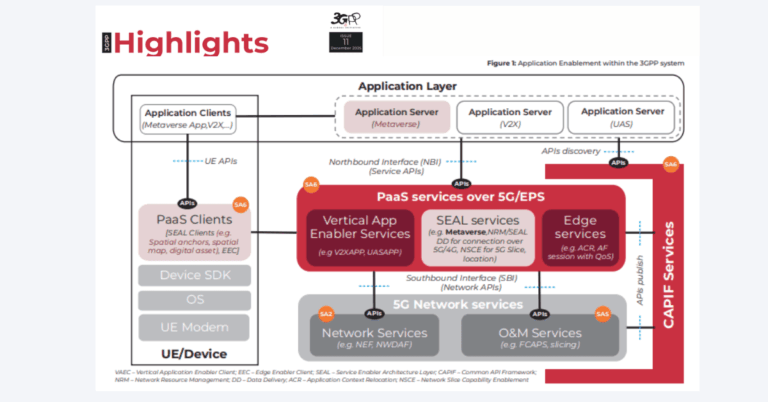SpaceX acquires EchoStar AWS-4/H-Block spectrum for $17B to power 5G Direct-to-Cell
A landmark spectrum deal gives SpaceX nationwide mid-band licenses and a new MVNO channel, while helping EchoStar deleverage and settle regulatory pressure over unused 5G airwaves.
Deal terms: cash, equity, debt coverage, MVNO pact
SpaceX agreed to acquire EchoStar’s AWS-4 and H-Block spectrum licenses in a transaction valued at up to $17 billion, split between as much as $8.5 billion in cash and up to $8.5 billion in SpaceX equity. As part of the package, SpaceX will also cover approximately $2 billion in cash interest payments on EchoStar debt through November 2027. The parties have also signed a long-term commercial agreement that would allow EchoStar’s Boost Mobile subscribers to access SpaceX’s next-generation Starlink “Direct to Cell” service once live. EchoStar said it will direct proceeds toward debt reduction and that Dish TV, Sling, and Hughes operations remain unaffected.
AWS-4/H-Block mid-band: why they’re optimal for NTN and device support
The AWS-4 (around 2 GHz S‑band) and H‑Block (adjacent to PCS 1900 MHz) holdings originated at Dish/EchoStar and were authorized for mobile-satellite service with an ancillary terrestrial component. These mid-band frequencies offer a balance of coverage and capacity, with propagation characteristics that are far more favorable for direct-to-device satellite than higher bands. For SpaceX, owning nationwide licensed spectrum complements its LEO constellation and reduces dependence on borrowed terrestrial spectrum for satellite-to-phone links. It also enables cleaner integration with 3GPP standards for non-terrestrial networks (NTN) across LTE/5G, a prerequisite for mass-market device interoperability over time.
Why now: FCC pressure, maturing NTN tech, and operator economics
The deal aligns spectrum policy pressures, a maturing satellite-to-cell technology stack, and operator economics that favor hybrid terrestrial-satellite coverage.
FCC buildout scrutiny, AT&T spectrum transfer, and deleveraging
EchoStar has faced Federal Communications Commission scrutiny over whether legacy holdings were being put to use to advance 5G. In parallel with this SpaceX sale, EchoStar also struck a separate $23 billion agreement to transfer other wireless licenses to AT&T, materially expanding that carrier’s low- and mid-band depth. Together, these transactions reposition underutilized spectrum with active network builders, address FCC concerns about deployment, and allow EchoStar to de-risk its balance sheet after its 2023 merger with Dish Network.
NTN moving to commercial scale with 3GPP R17/R18 and LEO payloads
3GPP Release 17/18 work on NTN, improving LEO payloads, and modem roadmap commitments are pushing satellite-to-cell from proof-of-concept into commercial planning. Owning AWS-4/H-Block gives SpaceX clearer pathways to standard-compliant waveforms and interference management, which will be key to scaling beyond messaging to voice, data, and IoT at acceptable performance levels. It also creates more predictable device certification opportunities as OEMs expand mid-band support for NTN.
What it means for carriers, device vendors, and investors
This reshapes spectrum availability, MVNO strategy, and the competitive stack for satellite-to-phone services in the U.S.
Carrier strategies: hybrid satellite-terrestrial coverage and MVNO use cases
AT&T’s parallel spectrum purchase suggests a conventional densification track, while SpaceX’s buy points to a hybrid model where satellite augments terrestrial cells for coverage and resiliency. The Boost Mobile arrangement hints at satellite fallback integrated into value and prepaid tiers first, then potentially into enterprise and public safety offers. For Verizon and T‑Mobile, the move raises the table stakes: align on similar satellite coverage strategies, or risk ceding “anywhere connectivity” claims to rivals that pair mid-band spectrum with LEO capacity.
Device roadmap: mid-band NTN bands, interference coordination, service phases
Mid-band spectrum ownership improves the odds that future smartphones and modules can support satellite-to-cell on bands already familiar to RF front ends, subject to 3GPP band definitions and OEM tuning. Expect phased services—text first, then voice/data—as NTN capabilities mature and as interference coordination with adjacent terrestrial PCS/AWS operations is finalized. Vendors should watch for SpaceX guidance on band plans, duplexing, and power control to inform chipset and antenna designs.
Competitive outlook: SpaceX vs AST, Lynk, Apple/Globalstar
The satellite-to-device field includes SpaceX (Starlink Direct to Cell), Apple/Globalstar’s emergency messaging footprint, and players like AST SpaceMobile and Lynk. SpaceX now adds a critical differentiator: nationwide licensed mid-band spectrum tied to a scaled LEO network. That reduces regulatory and roaming friction versus models that rely primarily on carrier partnerships or narrowband allocations and could compress time-to-revenue once services clear approvals.
Key risks: approvals, interference rules, device readiness
Closing timelines, interference rules, and device support will determine how quickly value shows up for customers and investors.
FCC consent, conditions, and review timeline
The spectrum transfers require FCC consent, including any conditions on buildout, power limits, satellite-terrestrial coexistence, and timelines for commercial launch. Stakeholders should plan for a multi-month review window and potential public comment on interference protections and market concentration.
Core integration, QoS tiers, E911 compliance, pricing models
Operators will want clarity on core integration (roaming vs. native), quality-of-service tiers, emergency services compliance, and pricing models for satellite fallback. MVNOs like Boost can use satellite coverage to reduce churn and open rural segments, but service-level agreements, device certification, and customer education will be make-or-break.
Enterprise and public sector: resilience, grants, rural broadband
Public-sector and rural broadband programs increasingly accept satellite as part of a mixed toolkit. Starlink’s recent state-level awards to reach unserved homes underscore that governments will fund pragmatic coverage, not just fiber builds. For enterprises, satellite-to-cell promises continuity for field operations, logistics, and utilities without ruggedized satellite handsets—if device and policy support arrives on schedule.
Action plan for carriers, MVNOs, enterprises, and vendors
Use the deal window to recalibrate coverage strategies, device roadmaps, and partner portfolios.
Carriers/MVNOs: pilot satellite fallback, device SKUs, policy control
Stress-test business cases that combine terrestrial RAN with satellite overlays for rural fill, disaster recovery, and maritime/aviation edges. Prioritize device SKUs likely to support mid-band NTN and engage early on interconnection terms, SIM profiles, and policy control integration. Consider marketing pilots in prepaid and enterprise verticals to validate willingness to pay.
Enterprises/public sector: map workflows, procure satellite-capable devices
Map critical workflows to satellite-fallback coverage and latency tolerances; update procurement to include satellite-capable endpoints and modems. Align grant applications and resiliency budgets to exploit satellite where trenching is uneconomic or slow. Require clear SLAs for emergency services and priority access.
Vendors/investors: align RF designs, track approvals and pilots
Align RF front-end, antenna, and modem designs to mid-band NTN assumptions; plan for certification cycles tied to FCC conditions. Investors should watch approval milestones, device partner announcements, and early Boost Mobile pilots as leading indicators of adoption and ARPU uplift.
Bottom line: mid-band spectrum accelerates satellite-to-cell
SpaceX’s purchase of EchoStar’s AWS-4 and H-Block turns underused spectrum into a strategic lever for direct-to-device services and gives EchoStar balance-sheet relief while cooling FCC pressure.
Strategic takeaway: blended terrestrial-satellite 5G will define coverage
Mid-band spectrum in the hands of an active satellite builder accelerates the shift toward blended terrestrial-satellite mobile, and the operators that operationalize it first—through devices, plans, and policy—will set the bar for coverage and resiliency in the 5G era.







































